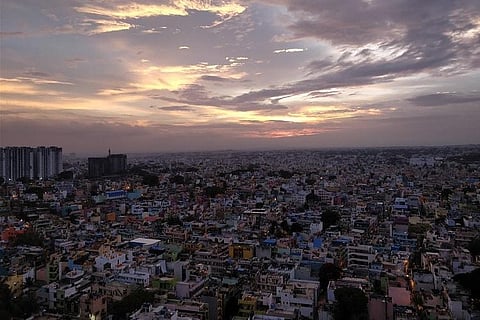

With its burning lakes and potholed roads, it’s no surprise that Bengaluru has found itself at the bottom of the list among 23 of India’s biggest cities in a comprehensive scrutiny of quality of urban governance.
Bengaluru emerged as the worst city in India after an assessment of the quality of laws, policies, institutions, and institutional processes – commonly called city systems in the 2017 Annual Survey of India’s City System (ASICS), carried out by Janaagraha, a city-based non-profit.
The study suggests that the city systems are the base or structure on which the quality of life of its residents depends.
So what are these city systems?
For this study, four factors were taken into account to gauge the quality of life for residents of a city a) Urban planning and design b) Urban capacities and resources c) Transparency, accountability and participation and d) Empowered and legitimate political representation.
For this study, all these factors are equally weighted.
To make the comparative analysis quantifiable, the surveyors used 89 questions over 150 parameters and more than 3,200 points of investigation. More than 50 laws were also studied and about hundred financial documents like the budget/audited account reports and RTI replies were also taken into account. The study scores cities on a scale of 0 to 10. The Indian cities are also compared to benchmark cities across the world like New York and London.
While both New York and London score 8.8, Indian cities struggle to cross the 5 point mark.
Pune is the best Indian city to live with a 5.1 rating followed by Kolkata, Thiruvananthapuram and Bhubaneswar, each receiving a rating of 4.6.
Capital Delhi manages a score of 4.4, while Hyderabad a 4.3. Mumbai is at 4.2, Chennai gets a 3.4 with Bengaluru at 3.
The study also revealed that most cities have the same problems repeated multiple times.
“The key messages from ASICS since its first edition in 2013 have remained consistent. India’s cities need to address five systemic challenges in order to deliver better quality of life to citizens in a sustainable manner,” the study said.
1. Lack of viable spatial planning and design standards for public utilities – India has 1 urban planner per 400,000 people compared to UK’s 148 for the same
2. Weak finances, both in terms of financial sustainability and accountability – more than half of the municipalities do not generate enough money to pay their salaries, 70% of the cities’ budget vary by 30%
3. Poor human resource management – 35% average staff vacancy
4. Powerless mayors and city councils, severe fragmentation of governance – multiple civic bodies, parastatals – multiple civic bodies with frequent change of toothless mayors, commissioners
5. Total absence of systematic citizen participation and transparency – Only two cities have ward committees
What ails Bengaluru?
All the five problems are true for Bengaluru, affirms Anil Nair, deputy head of advocacy at Janaagraha.
“The BBMP Mayor is indirectly elected for a term of one year only. The absence of an empowered political leadership renders them less effective. Most cities covered under ASICS have a 5-year Mayoral term (Chennai, Kolkata) or 2.5-year term (Mumbai, Ahmedabad, Surat, Pune),” he told TNM.
“Further, the BBMP Mayor is not ex officio member of the Metropolitan Planning Committee, which is the authority mandated to prepare the development plan for the Bengaluru Metropolitan region,” Anil added.
Bengaluru has multiple civic agencies, such as the BMTC, BWSSB, BDA, BMRDA, BMRCL, over which the elected council at BBMP has no oversight. These parastatals report directly to the state departments unlike in a city like Mumbai where services like water and transport are handled by MCGM. This is also a leading problem, Anil opined.
In terms of finances, BBMP is not only inefficient but highly opaque.
“BBMP scored poorly on financial management parameters in ASICS 2017. Cities that had scored less than Bengaluru last year, such as Jaipur, Ludhiana and Surat, have undertaken financial management reforms as part of AMRUT, which have helped them improve their scores this year,” Anil observed.
The factors considered for this metric are:
· Timeliness of budget estimates
· Systematic and time-bound citizen participation in budgeting
· Empanelment of Chartered Accountants as independent auditors of annual accounts
· Specified timelines for filing of auditor’s report and audited financial statements
· Standardised accounting and budgeting rules, and standardised formats of annual accounts supported by standardised information systems
· Timely disclosure of a comprehensive Annual Performance Report
Moreover, Anil pointed out that the BBMP has not made available in the public domain information such as audited financial statements or staffing information.
“Smaller cities such as Ranchi, Bhubaneshwar and Thiruvananthapuram have instituted an office of Local Body ombudsman to address service related issues, which Bengaluru is yet to launch,” he added.
Anil also stressed on the BBMP’s reluctance to institutionalise public participation platforms, such as ward committees and area sabhas.